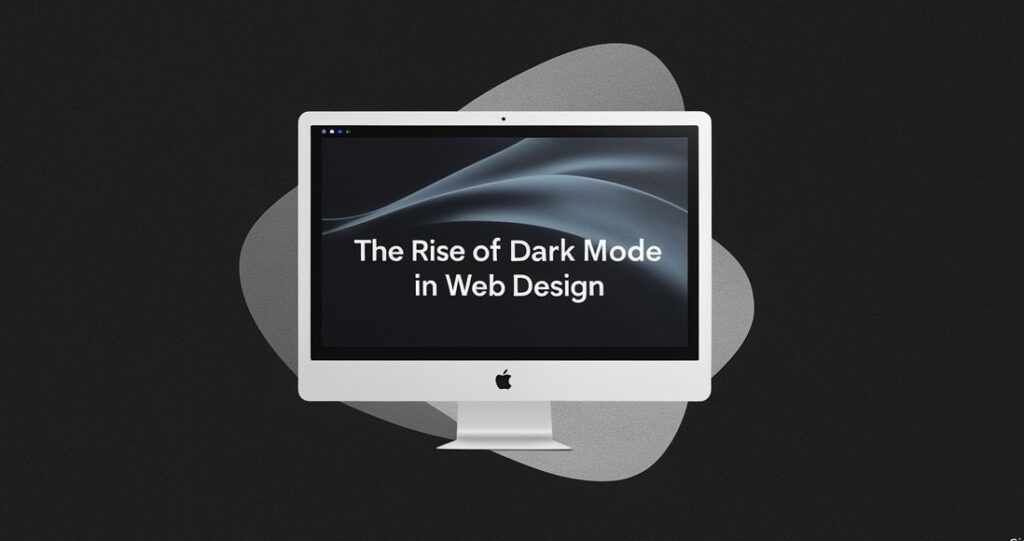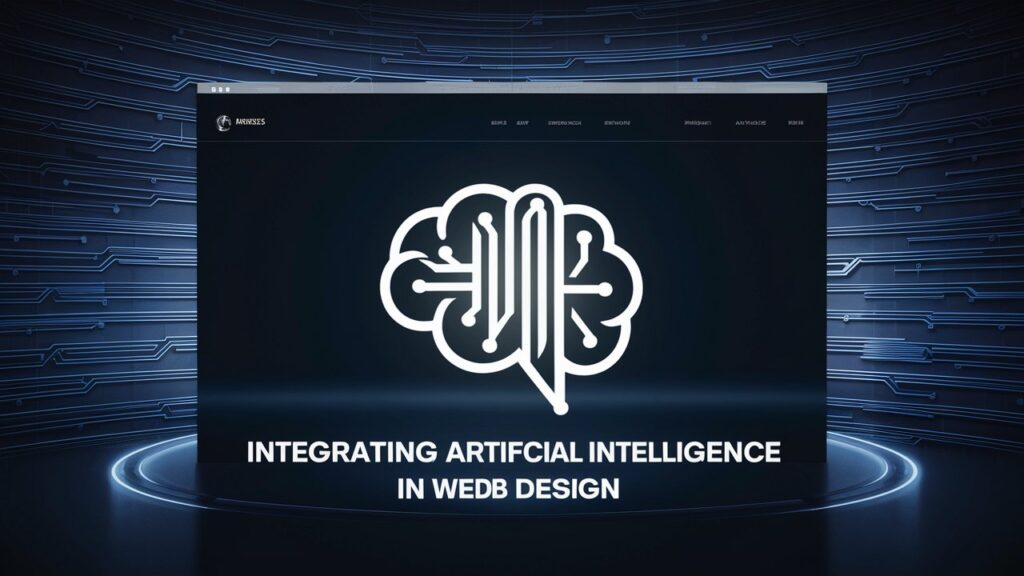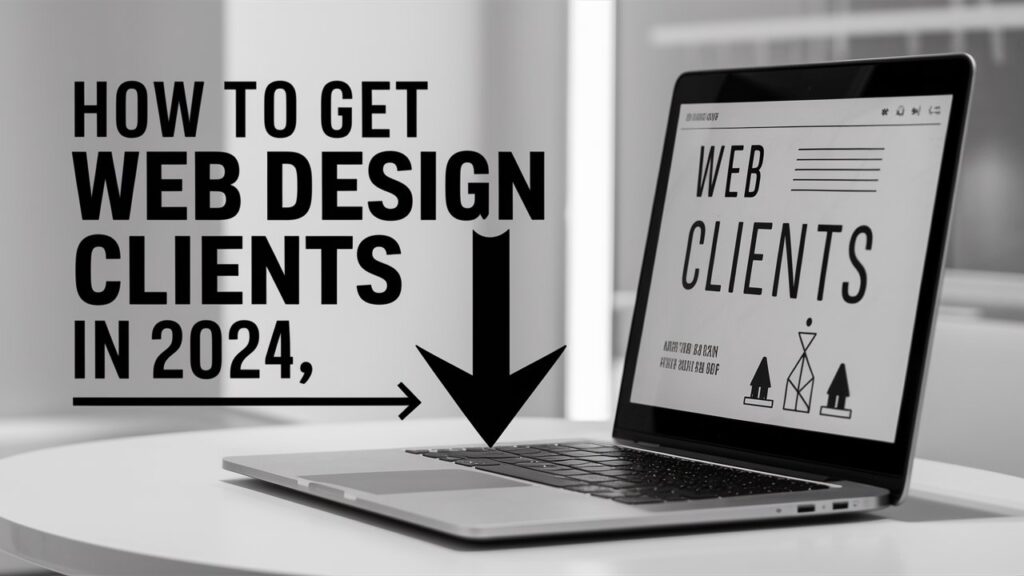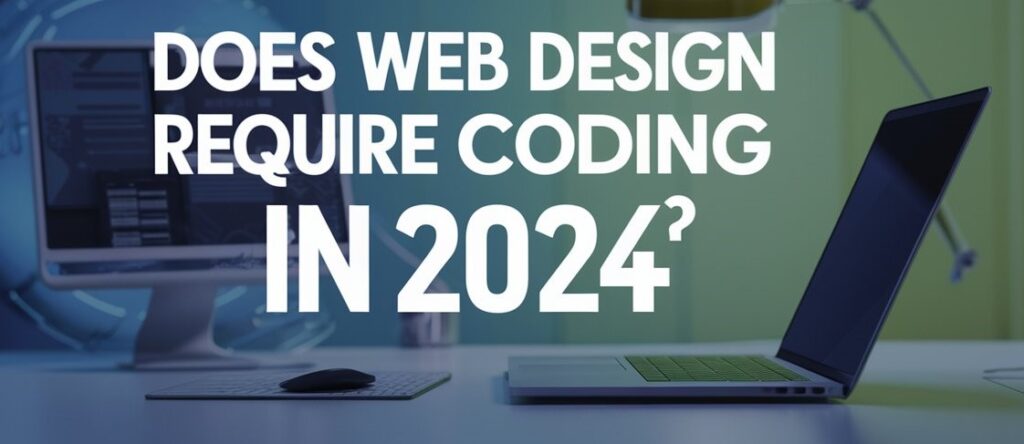Introduction to Modern Web Design Trends in 2024
As we step into 2024, the digital landscape continues to evolve, bringing forth new challenges and opportunities in web design. Modern web design is not just about aesthetics, it’s a pivotal factor that influences user engagement, accessibility, and ultimately, the success of a website. This year, we are seeing a blend of technological advancements and creative design trends that aim to enhance user experience and cater to the ever-changing demands of web users. From dynamic responsive designs to the integration of AI-driven functionalities, staying ahead in the web design game requires an understanding of what’s trending. In this guide, we will explore the latest trends in modern web design that are shaping the online world today.
Table of Contents
The Importance of Keeping Up with Modern Web Design
In today’s fast-paced digital era, keeping up with modern web design trends is crucial for any business or individual looking to maintain relevance and competitive edge online. Web design trends often reflect broader technological and cultural shifts. For instance, the increasing use of mobile devices has made responsive design not just a trend but a necessity. Furthermore, as user preferences evolve, features like dark mode have moved from being optional to essential. By staying updated with these trends, designers and developers can ensure that websites not only look contemporary but also function efficiently, meeting the expectations of today’s tech-savvy users.
Key Elements of Modern Web Design in 2024
Modern web design in 2024 is characterized by several key elements that focus on enhancing the user experience while incorporating cutting-edge technologies. First and foremost, simplicity and clarity have taken center stage, with minimalism becoming increasingly popular for its clean lines and uncluttered interfaces. This year, we’re also seeing a strong emphasis on mobile-first design approaches, acknowledging that a significant portion of web traffic comes from mobile devices. Another critical element is the use of advanced animations and micro-interactions that make navigating websites more intuitive and engaging. Additionally, the integration of AI and machine learning technologies is providing personalized user experiences, making websites smarter and more adaptive to individual user needs.
Understanding the Latest Design Technologies
To truly master modern web design, one must have a grasp of the latest technologies that drive these trends. In 2024, technologies such as CSS Grid Layout and Flexbox offer unparalleled control over responsive layouts, making it easier to create complex designs that are both flexible and consistent across different screen sizes. The advent of API-first design is also noteworthy, promoting a more streamlined process in developing applications with a focus on functionality and user experience. Furthermore, the rise of voice-activated interfaces and augmented reality (AR) are pushing the boundaries of traditional web design, creating immersive and interactive environments that cater to users’ growing expectations for innovative and responsive digital experiences. Understanding and leveraging these technologies will empower designers to create more dynamic and effective websites.
User Experience (UX) and Its Role in Modern Web Design
User Experience (UX) continues to be a cornerstone of modern web design in 2024, emphasizing the importance of designing websites that are not only visually appealing but also user-friendly and accessible. A strong UX design ensures that visitors can navigate a website intuitively, find information quickly, and perform desired actions without frustration. This year, UX is increasingly informed by data-driven approaches, utilizing analytics and user feedback to refine designs continuously. Key UX strategies include the creation of personalized experiences through predictive analytics and adaptive content, ensuring content relevance and engagement. Moreover, accessibility has become a crucial part of UX design, with web designers focusing on creating inclusive environments that cater to users with varying abilities, thereby broadening a site’s reach and impact.
The Impact of Mobile-First Design
The mobile-first design philosophy has been critical in modern web design, particularly as mobile devices continue to dominate internet usage. In 2024, designing with a mobile-first approach is more relevant than ever, as it prioritizes the needs and limitations of mobile users from the outset, ensuring a seamless experience across all devices. This approach involves using responsive design techniques that adapt to various screen sizes and orientations, optimizing touch controls for better interaction, and minimizing load times to improve performance on cellular networks. Emphasizing mobile-first design not only enhances user satisfaction but also benefits search engine rankings, as search engines increasingly favor mobile-friendly websites in their algorithms.
Incorporating Minimalism into Web Design
Minimalism in web design has evolved beyond a mere aesthetic choice into a functional design philosophy that prioritizes usability and performance. In 2024, minimalistic web design emphasizes clean layouts, monochromatic color schemes, and maximal whitespace, which collectively enhance user focus and make websites easier to navigate. This design trend is not just about reducing visual clutter but also about streamlining site functionality to improve load times and optimize backend performance. By focusing on what is essential, designers can ensure that users are not overwhelmed with information, leading to a more satisfying and effective user experience. Furthermore, minimalism aligns well with the principles of mobile-first design, making it a crucial component in modern web strategies.
The Rise of Dark Mode in Web Design

Dark mode has transitioned from a trendy option to a fundamental feature in modern web design, particularly as more users opt for this preference to reduce eye strain and conserve battery life on mobile devices. In 2024, incorporating dark mode into web designs isn’t just about offering an aesthetic choice; it’s about enhancing usability in low-light environments and reflecting the growing demand for personalized user experiences. Designers are adopting dark mode not only for its visual appeal but also for its practical benefits, including improved visibility of typography and other design elements. Implementing dark mode effectively requires careful consideration of color schemes and contrast ratios to maintain readability and accessibility, ensuring that all users have a comfortable viewing experience regardless of their display settings.
Importance of Typography in Modern Web Design
Typography in web design goes beyond the choice of attractive fonts; it is a crucial tool for creating hierarchy, harmony, and readability. In 2024, designers are leveraging typography to enhance user engagement and convey brand identity more dynamically. With the availability of diverse web fonts and variable fonts technology, there is a greater scope for customization and responsiveness in text design. Effective typography is not just about choosing the right font; it involves the strategic use of typefaces, consistent kerning, leading, and alignment to ensure that text is not only legible across devices but also engaging. Additionally, the integration of SEO within typography practices, by optimizing text for readability and scannability, can significantly boost a site’s visibility and user retention.
Using Micro-Interactions to Enhance User Engagement
Micro-interactions are small, functional animations that occur as a user interacts with a website. These subtle effects can significantly enhance the user experience by providing feedback, encouraging engagement, and making the user journey feel more intuitive and rewarding. In 2024, micro-interactions have become more sophisticated and are used to guide users through their interactions, from filling out forms to changing settings or initiating processes. Whether it’s the animation of a button when clicked or a loading bar indicating progress, these details contribute to a smoother and more interactive experience. Moreover, when thoughtfully implemented, micro-interactions can make a website feel alive and responsive, greatly increasing user satisfaction and reinforcing the site’s functionality.
Best Practices for Responsive Design
In 2024, responsive design remains a non-negotiable aspect of modern web development, crucial for ensuring that websites adapt seamlessly across various devices and screen sizes. Best practices in responsive design involve using fluid grid layouts that utilize percentages for width instead of fixed pixels, flexible images that resize within their containing elements, and media queries that apply different CSS style rules based on device characteristics. This approach ensures that whether a user is on a desktop, tablet, or smartphone, the website provides an optimal viewing experience without unnecessary resizing, panning, or scrolling. Additionally, responsive design enhances SEO as search engines prioritize mobile-friendly websites, thereby boosting visibility in search results.
Integrating Artificial Intelligence in Web Design

Artificial Intelligence (AI) is reshaping modern web design by enabling more personalized, efficient, and interactive user experiences. In 2024, AI-driven functionalities such as chatbots, personalized content curation, and automated customer support are becoming standard features on many websites. These AI elements not only enhance user engagement by providing instant assistance and tailored interactions but also help websites manage large volumes of user interactions without compromising service quality. Furthermore, AI can optimize web design processes through predictive analytics and adaptive design systems that evolve based on user behavior and feedback, ensuring that designs remain user-centric and technically up-to-date.
SEO Best Practices for Modern Web Design
SEO is integral to the success of any website, and modern web design must incorporate SEO best practices to ensure high visibility and organic traffic. This includes structural elements like proper use of HTML tags (such as H1, H2 for titles and subtitles), ensuring website speed optimization, mobile-first design, and accessible navigation. Additionally, semantic HTML, which uses specific tags to indicate headings, main content, and navigational links, helps search engines better understand and index the site’s content. Rich snippets and structured data markup further enhance the way websites communicate with search engines, making them more likely to be featured in enhanced search results. Keeping these SEO practices in mind during the design process not only helps in achieving aesthetic goals but also boosts a website’s discoverability and user engagement.
The Role of Accessibility in Modern Web Design
Accessibility is crucial in modern web design, ensuring that websites are usable for people with various disabilities. This includes visual, auditory, motor, and cognitive impairments. In 2024, adhering to Web Content Accessibility Guidelines (WCAG) is not just a recommendation but a necessity for creating inclusive digital environments. This involves designing websites that support screen readers, enabling keyboard navigation, using sufficient color contrast, and providing alternative text for images. By prioritizing accessibility, designers not only comply with legal standards but also reach a broader audience, enhancing the user experience for all visitors. Moreover, accessible websites tend to have better SEO rankings, as search engines favor sites that cater to a diverse user base.
How to Stay Updated with Ongoing Web Design Trends
Staying updated with ongoing web design trends is vital for designers wishing to remain relevant in a rapidly evolving field. This can be achieved by regularly engaging with design communities, participating in webinars, and attending industry conferences. Subscribing to top design blogs, following influencers on social media, and experimenting with new design tools and technologies also keep skills sharp and ideas fresh. Additionally, continuous learning platforms offer courses that cover the latest trends and techniques in web design. By staying informed, designers can adapt to new challenges and keep their work innovative and aligned with the latest user expectations and technological advancements.
Tools and Resources for Mastering Modern Web Design
Mastering modern web design requires not only skill and creativity but also the right tools and resources. Key software tools like Adobe XD, Sketch, and Figma offer robust features for creating dynamic, responsive designs. Additionally, online resources such as Canva and Webflow allow designers to implement complex web functionalities without deep coding knowledge. For those looking to enhance their coding skills, platforms like Codecademy and Treehouse provide interactive learning experiences in HTML, CSS, JavaScript, and more. Furthermore, inspiration can be drawn from design showcases on sites like Behance and Dribbble, where designers share their latest projects and ideas. Leveraging these tools and resources can significantly enhance a designer’s ability to create compelling and effective websites.
How to Get Web Design Clients in 2024

Securing web design clients in 2024 requires a strategic blend of networking, showcasing your skills, and leveraging digital marketing. Building a strong online presence through a professional portfolio website is essential, as it serves as the first point of contact for potential clients. Engaging actively on social media platforms and participating in design communities can also increase visibility and attract clients. Additionally, utilizing content marketing, such as writing blogs or creating tutorial videos related to web design, can establish credibility and expertise in the field. Networking events and local business meetings continue to be invaluable for building relationships that can lead to referrals and new projects. By combining these approaches with a clear understanding of target markets and client needs, web designers can effectively attract and retain a diverse clientele.
Why Web Design is Important for Businesses
In 2024, web design holds significant importance for businesses as it directly influences customer perceptions, engagement, and conversions. A well-designed website serves as a digital storefront, setting the first impression for potential customers. It reflects a company’s brand, professionalism, and reliability. Moreover, effective web design enhances user experience, making it easier for visitors to navigate, find information, and take action, such as making a purchase or signing up for a newsletter. Additionally, good web design is crucial for SEO, ensuring that a website not only looks appealing but is also optimized for search engines to drive organic traffic. As businesses continue to operate in increasingly digital environments, investing in high-quality web design is paramount for staying competitive and achieving long-term success.
How to Choose a Web Designer: A 2024 Guide
Choosing the right web designer in 2024 involves several key considerations to ensure that your digital goals are met effectively. Start by defining your project’s scope and objectives clearly, which will help in selecting a designer whose skills and style align with your vision. Reviewing portfolios and case studies can provide insights into a designer’s expertise and creativity. It’s also important to consider their experience with responsive design, user experience, and SEO best practices. Communication is another crucial factor; choose a designer who communicates clearly and is responsive to your needs. Lastly, discuss project timelines, budget, and ongoing support to ensure there are no misunderstandings. By taking these steps, you can form a productive partnership that brings your digital vision to life.
How to Choose a Web Design Agency: Top Tips
Choosing the right web design agency in 2024 is a decision that can significantly impact the success of your online presence. When selecting an agency, it’s crucial to evaluate their experience across different industries and their ability to innovate and adapt to the latest design trends. Start by examining their portfolio to gauge the diversity and quality of their work. Client testimonials and case studies can offer insights into their process and client satisfaction levels. It’s also important to understand the range of services they offer—are they able to handle everything from design to development to post-launch support? Communication style and agency culture should also align with your business values to ensure a smooth collaboration. Make sure to discuss their approach to user experience and SEO, as these aspects are critical for the success of any web project.
How to Create a Stunning Web Design Portfolio
Creating a stunning web design portfolio in 2024 is essential for demonstrating your skills and attracting potential clients or employers. Start by selecting your best work that showcases a variety of skills and solutions across different platforms and industries. Each project should be presented with a brief but detailed case study, highlighting the problem, your approach, the solution, and the results. Incorporating testimonials from clients or collaborators can add credibility. Ensure that your portfolio itself is designed with usability and aesthetics in mind, showcasing your skills as a web designer. It’s also beneficial to include a professional bio and a clear way for potential clients to contact you. Regular updates with new, innovative projects will keep your portfolio fresh and relevant, attracting a broader audience.
Does Web Design Require Coding in 2024?

In 2024, web design can require coding skills, but it largely depends on the specific roles and projects. Traditional web design roles that focus on the visual and user experience aspects might not require extensive coding skills, as many tools and platforms now facilitate design without writing code. However, understanding the basics of HTML, CSS, and JavaScript can greatly enhance a designer’s ability to communicate with developers and to make minor adjustments without dependency. For those looking to expand into web development or more technical areas, coding becomes essential. Learning coding can also provide a competitive edge in the job market, offering a broader skill set that can lead to more diverse and challenging opportunities.
Conclusion
As we navigate through 2024, mastering modern web design requires a blend of aesthetic sensibility, technical prowess, and a deep understanding of user needs. The evolving landscape of digital design demands that professionals not only keep up with current trends but also anticipate future developments. Embracing new technologies, understanding the foundational principles of design, and continually adapting to user feedback are essential for creating compelling and successful websites. Moreover, as the digital frontier expands, the role of web design in business success becomes increasingly significant, impacting everything from user engagement to overall brand perception.
For anyone looking to excel in web design this year, staying informed, experimenting with new tools and techniques, and continuously seeking to improve user experiences are vital strategies. Whether you’re building your own portfolio, choosing a designer, or working with an agency, the core principles of modern web design hinge on creativity, functionality, and accessibility. By focusing on these aspects, designers and businesses alike can achieve not just aesthetic excellence but also enhanced performance and broader reach in the digital space.
